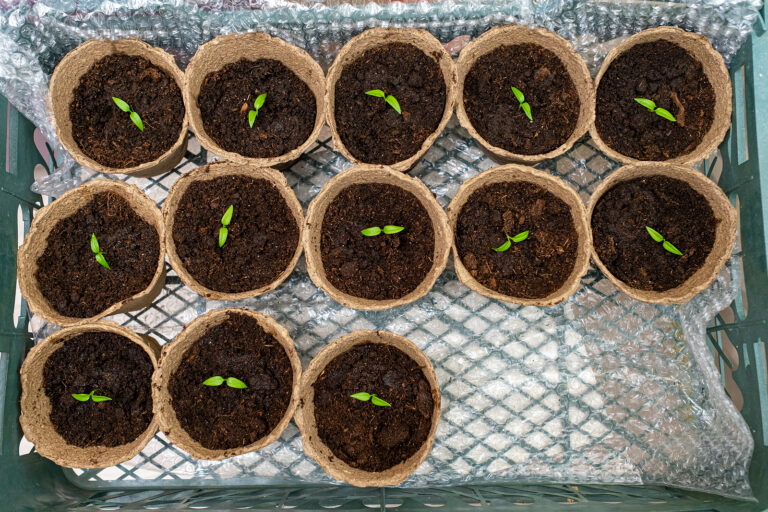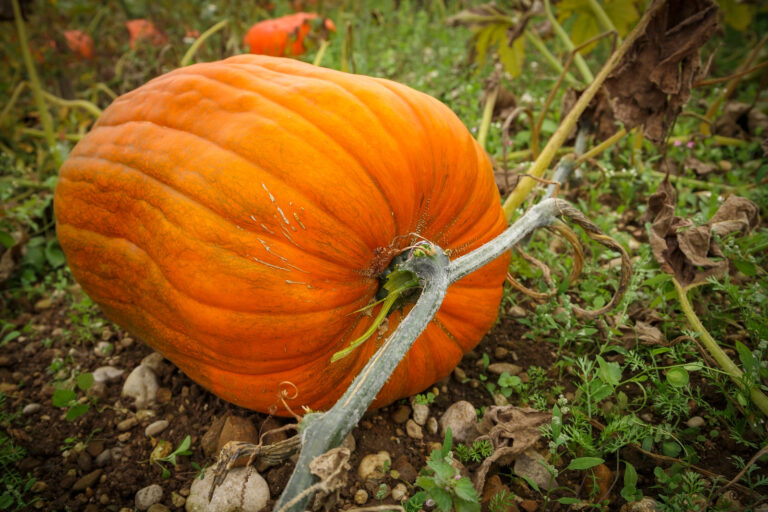Encouraging Mycorrhizae Naturally: No-Till and Compost Strategies for Regenerative Soil Health
Healthy, living soil depends on underground partnerships—especially the alliance between plants and mycorrhizal fungi. These fungi colonize plant roots, extending their reach through the soil to deliver water and nutrients in exchange for plant sugars. Encouraging these natural relationships is at the heart of regenerative gardening, where we work with soil biology, not against it.
What Are Mycorrhizal Fungi?
Mycorrhizae are beneficial fungi that form symbiotic relationships with plant roots. Their threadlike hyphae stretch deep into the soil, linking plants into nutrient-sharing networks often called the “wood wide web.” They improve phosphorus and micronutrient uptake, enhance drought resistance, and help stabilize soil aggregates.
In my own vegetable beds, I’ve seen crops like tomatoes, onions, and corn grow more vigorously in soils enriched with compost and left undisturbed by tilling—clear signs of healthy mycorrhizal networks at work.
1. Why No-Till Gardening Supports Mycorrhizae
Tilling disrupts fungal hyphae, breaking the living connections between roots and soil. By adopting a no-till or minimal-disturbance approach, you allow these fungal networks to thrive year after year.
EEAT Insight: In over 30 years of regenerative growing, I’ve learned that reducing soil disturbance leads to looser, more fertile soil and stronger plant resilience.
Tips for a No-Till System:
- Use broadforks or hand tools to aerate without flipping soil layers.
- Add organic matter to the top, letting worms and microbes incorporate it naturally.
- Keep soil covered year-round with living plants or mulch.
2. Compost as a Mycorrhizal Booster
Compost introduces beneficial fungi, bacteria, and organic matter that nourish existing mycorrhizal populations. Fungal-dominant composts—those rich in woody material—are especially good for supporting long-term soil structure and fungal activity.
Best Practices:
- Use mature compost, not hot or fresh material.
- Apply compost as a topdressing or mulch rather than mixing it in.
- Feed the fungi with carbon-rich inputs like leaves, straw, or wood chips.
When I apply compost in spring and fall, I avoid digging it in. Within weeks, I often see fine white fungal threads weaving through the topsoil—a clear sign of a living soil web.
3. Living Roots and Continuous Cover
Mycorrhizae depend on living plants to survive. Bare soil starves them of sugars and causes colonies to die back. Keeping living roots in the ground—even through cover crops—ensures fungi stay active year-round.
Good Companion Plants for Mycorrhizal Growth:
- Grasses (like rye or oats)
- Legumes (like peas and vetch)
- Perennials (like herbs and strawberries)
4. Avoiding Practices That Harm Mycorrhizae
To keep fungal networks thriving, avoid:
- Synthetic fertilizers: High-phosphorus fertilizers can reduce fungal colonization.
- Pesticides and fungicides: Many harm beneficial fungi along with pathogens.
- Excessive disturbance: Repeated cultivation severs hyphal networks.
My Experience with Fungal Regeneration
Over decades of regenerative gardening, I’ve found that no-till beds rich in compost and covered with mulch are alive with mycorrhizae. Plants grown in these soils are more resilient to drought and disease, and the soil becomes increasingly self-sustaining. Encouraging mycorrhizal life is less about adding inputs and more about allowing nature’s underground community to flourish undisturbed.
Supporting Mycorrhizae Naturally: Compost, Cover Crops, and Practices That Build Fungal Networks
| Soil-Building Practice or Input | Effect on Mycorrhizae | Why It Helps | Best Application Method | EEAT Insight from Experience |
|---|---|---|---|---|
| No-Till or Minimal Tillage | Strongly encourages fungal networks | Preserves existing hyphae and soil structure | Use broadforks or aerate without turning soil | After switching to no-till, I saw fewer weeds and more fungal threads in spring beds. |
| Compost (Woody, Fungal-Dominant) | Promotes fungal diversity | Adds stable carbon and inoculates soil with beneficial fungi | Apply 1–2 inches as a topdressing | Fungal compost improved soil aggregation in my tomato and onion beds within one season. |
| Leaf Mold | Encourages fungal colonization | High in decomposed lignin, mimicking forest soil | Spread as mulch around crops | I’ve seen leaf mold foster white fungal webs that boost moisture retention. |
| Cover Crops (Rye, Vetch, Clover) | Sustains mycorrhizal populations | Keeps living roots active year-round | Plant after harvest; terminate with crimping or cutting | Cover crops gave my soil a steady, living fungal habitat through winter. |
| Wood Chip Mulch | Supports mycorrhizal habitat | Provides carbon food for fungi and moderates soil temperature | Apply 2–3 inches on pathways or around perennials | I noticed stronger fungal strands under mulch by midseason—especially near fruiting vegetables. |
| Compost Tea (Aerated, Fungal-Focused) | Inoculates soil with active microbes | Introduces living fungal spores and beneficial bacteria | Apply as a soil drench in cool hours | Regular compost tea helped balance microbial life in my heavily cropped beds. |
| Avoid Synthetic Fertilizers | Prevents fungal decline | Excess phosphorus suppresses mycorrhizal formation | Use organic sources like bone meal or fish emulsion instead | Mycorrhizal activity increased after I replaced synthetic phosphorus with slow-release organics. |
| Continuous Living Roots | Maintains active fungal networks | Plants feed fungi with sugars through root exudates | Rotate with legumes, grains, or perennial herbs | My soil stayed looser and darker where I kept living roots year-round. |
My Experience:
In my 30+ years of hands-on regenerative gardening, I’ve seen that fungi thrive in systems where the soil is never left bare, tilled, or chemically fertilized. When you feed fungi naturally with compost, roots, and carbon, they reward you with fertile, resilient, and beautifully structured soil.
Signs of Healthy Mycorrhizal Soil: What to Look For
| Indicator | What It Shows | How to Encourage It | EEAT Insight from Experience |
|---|---|---|---|
| White Fungal Threads (Hyphae) | Active mycorrhizal network feeding roots | Apply woody compost, leaf mold, and keep soil covered | In my Sonoma Valley beds, visible threads appeared within weeks of top-dressing fungal compost. |
| Crumbly, Well-Aggregated Soil | Fungi binding soil particles into stable aggregates | Maintain organic matter and avoid tilling | After 2 seasons of no-till and mulching, my clay soil turned loose and sponge-like. |
| Earthworm Activity | Symbiotic soil ecosystem with active microbes | Add compost, mulch, and maintain moist soil | Worms returned to beds where fungal networks were thriving, improving aeration naturally. |
| Strong, Vigorous Plant Roots | Effective nutrient and water uptake via fungal networks | Encourage continuous roots with cover crops and perennials | My tomatoes and onions had deeper roots in beds with active mycorrhizal networks. |
| Even Moisture Retention | Fungi and soil structure hold water efficiently | Mulch, add carbon-rich compost, and minimize disturbance | Beds stayed hydrated longer during Sonoma’s dry season without additional irrigation. |
| Earthy, Sweet Smell | Balanced microbial community, humus-rich soil | Feed soil with organic matter and avoid synthetic chemicals | Finished compost and fungal mulch produced this unmistakable scent in all my raised beds. |
| Less Disease Pressure | Microbial competition suppresses pathogens | Maintain diverse, living soil | My beds with rich fungal networks had far fewer fungal or bacterial infections. |
💡 My Insight:
From decades of gardening, I’ve learned that healthy mycorrhizal soil is easy to identify once you know what to look for. White threads, crumbly texture, and strong roots are all visual cues that your regenerative practices are working—proof that feeding the soil life pays off in productivity and resilience.





